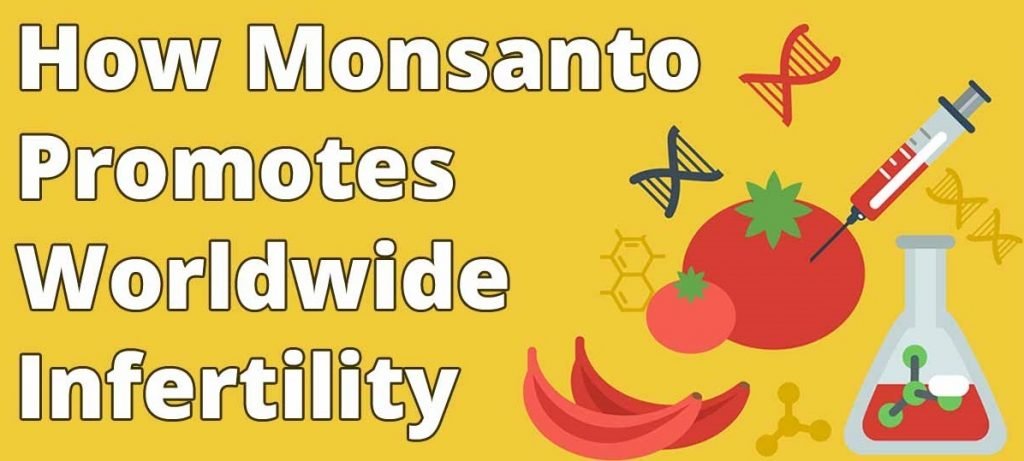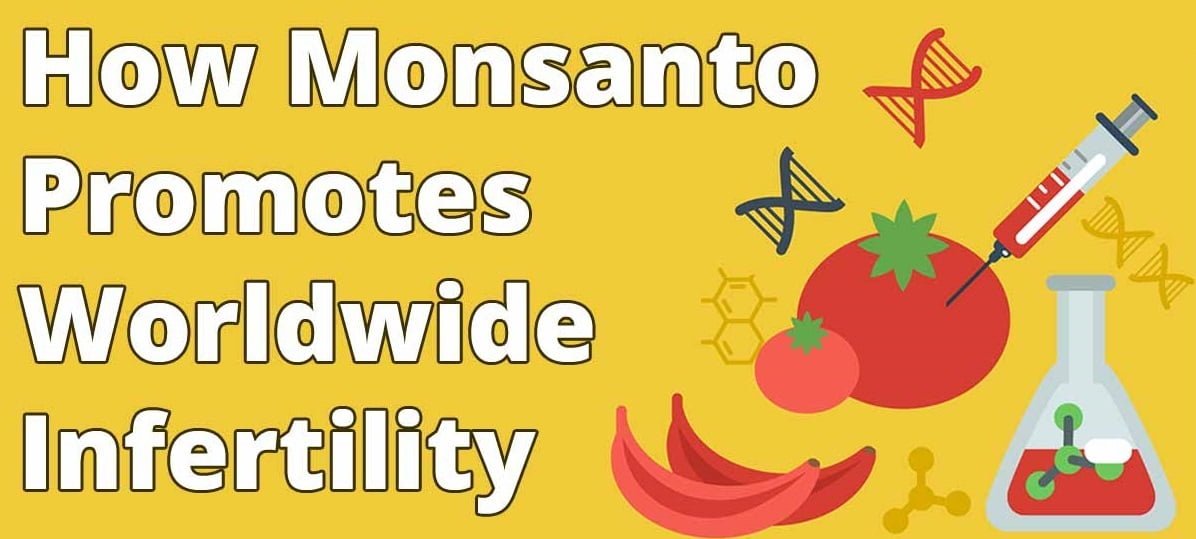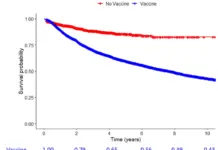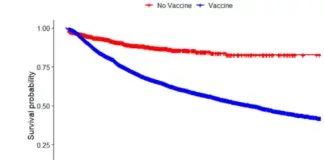
Monsanto has a long and infamous history of manufacturing and bringing to market such chemicals as DDT, Agent Orange, aspartame, Roundup and dioxin1 — chemical compounds from which society continues to feel the effects.
In an effort to distance the current corporation from past deeds, Monsanto refers to the company prior to 2002 as “the former Monsanto” in their news releases.2 However, nothing has really changed aside from their PR machine.
While Monsanto has branched into genetic engineering (GE) of plants, the sale of patented GE seeds simply feeds the need for the company’s pesticides. Monsanto is STILL primarily a purveyor of toxins, not life.
Monsanto began forging a unique and financially advantageous relationship with the U.S. government starting with the company’s involvement in the Manhattan Project that produced the first nuclear weapons during World War II. During the Vietnam War they were the leading producer of Agent Orange.
The specialization in the production and distribution of toxic chemicals continues today.
Their influence over government runs so deep that despite the fact 64 other countries have been labeling genetically engineered (GE) foods for years, the U.S. now has the distinction of being the first country to un-label GE foods at the urging of a company producing mass amounts of GE seeds.
Monsanto and Polychlorinated Biphenyls (PCBs)
In the latter part of the 1920s, Monsanto was the largest producer of PCBs. This chemical was used in lubricant for electric motors, hydraulic fluids and to insulate electrical equipment.3 Old fluorescent light fixtures and electrical appliances with PCB capacitors may still contain the chemical.
During the years PCB was manufactured and used, there were no controls placed on disposal. Since PCBs don’t break down under many conditions, they are now widely distributed through the environment and have made the journey up the food chain.4
Between the inception and distribution of the product and its subsequent ban in the late 1970s, an estimated 1.5 billion pounds were distributed in products around the world.5
Monsanto was the primary manufacturer of PCBs in the U.S. under the trade name Aroclor. Health problems associated with exposure to the chemical were noted as early as 1933 when 23 of 24 workers at the production plant developed pustules, loss of energy and appetite, loss of libido and other skin disturbances.6
According to Monsanto’s public timeline, it was in 1966 that “Monsanto and others began to study PCB persistence in the environment.”7
However, seven years earlier, Monsanto’s assistant director of their Medical Department wrote:
“… [S]ufficient exposure, whether by inhalation of vapors or skin contact, can result in chloracne which I think we must assume could be an indication of a more systemic injury if the exposure were allowed to continue.”8
In 1967, Shell Oil called to inform Monsanto of press reports from Sweden, noting that PCBs were accumulating in mammals further up the food chain. Shell asked for PCB samples to perform their own analytical studies.9
With full knowledge of the devastation expected to the environment and humanity, it wasn’t until 11 years later, in 1977, that Monsanto reportedly pulled production on PCB.10
PCBs Are Probable Human Carcinogens
The International Agency for Research on Cancer (IARC), the U.S. Environmental Protection Agency (EPA), the National Toxicology Program, and the National Institute for Occupational Safety and Health (NIEHS) have identified PCBs as either probable, potential or reasonably likely to cause cancer in humans.11
If it seems like these agencies are couching their words, they are. Human studies have noted increased rates of liver cancer, gall bladder cancer, melanomas, gastrointestinal cancer, biliary tract cancer, brain cancer and breast cancer when individuals had higher levels of PCB chemicals in their blood and tissue.12
However, the EPA limits the ability of researchers to link a chemical as a carcinogen unless there is conclusive proof. While this proof is evident in animal studies, you can’t feed these chemicals to humans and record the results. Thus PCBs are a “probable” carcinogen in humans.
Other health effects from PCBs include:
- Babies born with neurological and motor control delays including lower IQ, poor short-term memory and poor performance on standardized behavioral assessment tests
- Disrupted sex hormones including shortened menstrual cycles, reduced sperm count and premature puberty
- Imbalanced thyroid hormone affecting growth, intellectual and behavioral development
- Immune effects, including children with more ear infections and chickenpox
Once PCBs are absorbed in the body they deposit in the fat tissue. They are not broken down or excreted. This means the number of PCBs build over time and move up the food chain. Smaller fish are eaten by larger ones and eventually land on your dinner table.
Chemical Poisoning Begins Before Birth
A recent study at the University of California demonstrated that PCBs are found in the blood of pregnant women.13 Before birth, the umbilical cord delivers approximately 300 quarts of blood to your baby every day.
Not long ago, researchers believed the placenta would shield your developing baby from most pollutants and chemicals. Now we know it does not.
The umbilical cord is a lifeline between mother and child, sustaining life and propelling growth. However, in recent research cord blood contained between 200 and 280 different chemicals; 180 were known carcinogens and 217 were toxic to the baby’s developing nervous system.14
The deposits of chemicals in your body or the body of your developing baby are called your “body burden” of chemicals and pollution.
A steady stream of chemicals from the environment during a critical time of organ and system development has a significant impact on the health of your child, both in infancy and as the child grows to adulthood.
Tracey Woodruff, Ph.D., director of the University of California San Francisco Program on Reproductive Health and the Environment, was quoted in a press release, saying:
“It was surprising and concerning to find so many chemicals in pregnant women without fully knowing the implications for pregnancy. Several of these chemicals in pregnant women were at the same concentrations that have been associated with negative effects in children from other studies.
In addition, exposure to multiple chemicals that can increase the risk of the same adverse health outcome can have a greater impact than exposure to just one chemical.”
Butyl Benzyl Phthalate — Another Monsanto Product
Butyl benzyl phthalate (BBP), also manufactured by Monsanto, was recently implicated in cell fat storage.15 This specific phthalate was found in human fluids and had an effect on the accumulation of fat inside cells.
BBP is used in the manufacture of vinyl tile, as a plasticizer in PVC pipe, carpets, conveyer belts and weather stripping in your home and office.
Like other phthalates used in the production of plastics, BBP is not bound to the product and can be released into your environment. It may be absorbed by crops and move up the food chain.16 The biggest source of exposure is food.
Drive-through hamburgers and take-out pizzas may be increasing your intake of phthalates. The danger is not in the food itself but in the products used to handle it. The study analyzed data from nearly 9,000 individuals, finding the one-third who had eaten at a fast food restaurant had higher levels of two different phthalates.17
Potentially, BBP may adversely affect your reproductive function. However, at lower doses it also has an effect on your kidneys, liver and pancreas.18
Increased risks of respiratory disorders and multiple myelomas have also been reported in people who have exposure to products manufactured with BBP.19 An increasing waistline from BBP exposure may also reduce your fertility.
Low Sperm Count and Infertility Affecting Animals and Humans
A 26-year study of fertility in dogs, published recently, has distinct similarities to infertility rates in humans. In this study, researchers evaluated the ejaculate of nearly 2,000 dogs. Over the 26 year period, they found a drop in sperm motility of 2.4 percent per year.20
Additionally, both the semen and the testicles of castrated dogs contained by PCBs and phthalates, implicated in other studies to reduction in fertility. Phthalates have been implicated in both decreased sperm motility and quality of your sperm,21 affecting both fertility and the health of your children.22
Researchers used dogs in this study as they live in the same environment as their owners, and often eat some of the same food. This correlation between sperm function and concentration, and environment and food in dogs and humans is significant.
In those 26 years there was also a rise in cryptorchidism in male pups (a condition where the testicles don’t descend into the scrotum) born to stud dogs who experienced a decline in sperm quality and motility.23
Cryptorchidism and undescended testicles, occurs at a rate of 1 in 20 term male human infants and 1 in 3 pre-term babies.24
Problems with infertility are also affecting marine animals at the top of the food chain. In the western waters of the Atlantic, the last pod of Orcas are doomed to extinction.
High levels of PCB have been found in the fat of over 1,000 dolphins and Orcas in the past 20 years. Now taking a toll on the animal’s fertility, this pod of Orcas has not reproduced in the 19 years it has been under study.25
Orcas were living in the North Sea until the 1960s. At that time PCB pollution peaked in the area and the Orca whales disappeared. The same happened in the Mediterranean Sea, where the whales flourished until the 1980s. This pod off the coast of the U.K. is the last living pod in that area.
Monsanto’s Argument in PCB Lawsuits
https://www.youtube.com/watch?v=LnJHWdkWuT4
Although Monsanto denies culpability and knowledge of the danger behind the chemical PCB, you’ll discover internal documentation in this video that they did, in fact, know of the danger while manufacturing and distributing the product.
Monsanto is currently embroiled in several lawsuits across eight cities and the argument is over who owns the rain. The cities are suing Monsanto in Federal Court, saying PCBs manufactured by Monsanto have polluted the San Francisco Bay.26
Monsanto attorney Robert Howard argues that because the city does not own the water rights, the city does not have the right to sue. And, because the PCBs have not damaged city property, such as corroding pipes, Howard claims it is a state problem. Scott Fiske, attorney for three cities, countered with the city’s regulatory interests in management of storm water as a fundamental function of the city.27
While Fiske claims he can prove Monsanto knew the product was hazardous as early as 1969, Howard maintains the company should not be liable for the use of the chemicals it produced.
In 2001, Monsanto attorneys in the Owens v. Monsanto case, acknowledged only one health threat from exposure to PCBs: chloracne, and instead argued that since the entire planet has been contaminated, they are innocent of all liability.28
The attorney for Monsanto was quoted in the Chemical Industry Archives, saying:
“The truth is that PCBs are everywhere. They are in meat, they are in everyone in the courtroom, they are everywhere and they have been for a long time, along with a host of other substances.” 29
The cities currently engaged in lawsuits against Monsanto for damage to the environment and waterways include Berkley, Oakland, San Jose, Portland, Spokane, Seattle, Long Beach and San Diego.
All eight cities attempted to combine their cases against the agrochemical giant but were unsuccessful when one judge found the issues were different enough to warrant separate cases.30
Monsanto’s Deep Pockets
Monsanto petitioned the Federal Court to dismiss Portland’s lawsuit, claiming it would countersue, adding years to the process. It is likely Monsanto would increase the scope of the case and include companies who used the product and released the PCBs.31
Meanwhile, three plaintiffs in St. Louis received better news in May 2016 when a jury awarded them a total of $46.5 million, finding Monsanto negligent in the production of PCBs.32
This suit claimed Monsanto sold PCBs even after it learned about the dangers, bringing to court internal documents dated 1955, which stated:
“We know Aroclors [PCBs] are toxic but the actual limit has not been precisely defined.”33
To date this win over Monsanto has been rare. Williams Kherkher, attorney for the plaintiffs, explained in EcoWatch:34
“The only reason why this victory is rare is because no one has had the money to fight Monsanto.”
Kherkher and other firms pooled their resources in this case and expect wins in upcoming lawsuits. The firm has accumulated the names of approximately 1,000 plaintiffs with claims against Monsanto and PCBs.
SAD NEWS: House Passes DARK Act Compromise
The House passed a compromise to the DARK Act that will force food distributors to disclose the presence of genetically engineered (GE) ingredients with a smartphone scan code. President Obama has signed the bill that removes states’ rights for labeling GMOs. The bill is full of loopholes, which may allow genetically modified ingredients to slip through unannounced.
Genetically modified organisms (GMOs), aka GE foods, are live organisms whose genetic components have been artificially manipulated in a laboratory setting through creating unstable combinations of plant, animal, bacteria and even viral genes that do not occur in nature or through traditional crossbreeding methods.
GMO proponents claim that genetic engineering is “safe and beneficial,” and that it advances the agricultural industry. They also say that GMOs help ensure the global food supply and sustainability. But is there any truth to these claims? I believe not.
For years, I’ve stated the belief that GMOs pose one of the greatest threats to life on the planet. Genetic engineering is NOT the safe and beneficial technology that it is touted to be.
The FDA cleared the way for GE Atlantic salmon to be farmed for human consumption. Thanks to added language in the federal spending bill, the product will require special labeling so at least consumers will have the ability to identify the GE salmon in stores. However, it’s imperative ALL GE foods be labeled clearly without a smartphone scan code because not everyone owns a smartphone.
The FDA is threatening the existence of our food supply. We have to start taking action now. I urge you to share this article with friends and family. If we act together, we can make a difference and put an end to the absurdity.
Boycott Smart Labels Today
When you see the QR code or so-called Smart Label on a food product, pass it by. Products bearing the Grocery Manufacturer’s Association’s (GMA) Smart Label mark are in all likelihood filled with pesticides and/or GMO ingredients.
The GMA’s 300-plus members include chemical technology companies, GE seed and food and beverage companies. Monsanto, Dow and Coca-Cola are just some of the heavy-hitters in this powerful industry group, which has showed no qualms about doing whatever it takes to protect the interest of its members.
Don’t waste your time searching through their website, which may or may not contain the information you’re looking for. If they insist on wasting your time and making your shopping difficult, why reward them with a purchase?
A little known fact is that the GMA actually owns the “Smart Label” trademark that Congress has accepted as a so-called “compromise” to on-package GMO labeling, and that’s another reason why I believe the Smart Label mark is the mark of those with something to hide, such as Monsanto.
Will you financially support a corrupt, toxic and unsustainable food system, or a healthy, regenerative one? There are many options available besides big-brand processed foods that are part of the “GMA’s verified ring of deception.”
You can:
- Shop at local farms and farmers markets
- Only buy products marked either “USDA 100 percent Organic” (which by law cannot contain GMOs), “100 percent Grass-Fed” or “Non-GMO Verified”
- If you have a smartphone and you don’t mind using it, download the OCA’s Buycott app to quickly and easily identify the thousands of proprietary brands belonging to GMA members, so you can avoid them, as well as identify the names of ethical brands that deserve your patronage
Last but not least, encourage good companies to reject QR codes and to be transparent and clear with their labeling. This will eventually ensure that all GMO foods can easily be identified by the GMA’s “verified ring of deception” mark that is the Smart Label.
Campbell’s, Mars, Kellogg’s, ConAgra and General Mills all vowed to voluntarily comply with Vermont’s GMO labeling law by labeling all of their foods sold across the U.S. Will their plans change now that the law has been passed by Congress and signed by the President?
That remains to be seen, but if you like these companies, I would encourage you to reach out to them and ask them to remain steadfast in their promise.
Non-GMO Food Resources by Country
If you are searching for non-GMO foods, here is a list of trusted sites you can visit.
- Organic Food Directory (Australia)
- Eat Wild (Canada)
- Organic Explorer (New Zealand)
- Eat Well Guide (United States and Canada)
- Farm Match (United States)
- Local Harvest (United States)
- Weston A. Price Foundation (United States)
From the author: The existing medical establishment is responsible for killing and permanently injuring millions of Americans, but the surging numbers of visitors to Mercola.com since I began the site in 1997 – we are now routinely among the top 10 health sites on the Internet – convinces me that you, too, are fed up with their deception. You want practical health solutions without the hype, and that’s what I offer.
Sources and References:
1, 3 Top 10 Poisons that are the legacy of Monsanto. (2016). Seattleorganicrestaurants.com. Retrieved 14 August 2016
2, 7, 10 PCBs (polychlorinated biphenyl). (2016). Monsanto.com. Retrieved 14 August 2016
4 Polychlorinated Biphenyls (PCBs) and Your Health. (2014). Wisconsin Department of Health Services
5 What are PCBs?. (2016). Oceanservice.noaa.gov. Retrieved 14 August 2016
6, 8, 9 The History of PCBs | America Unites. (2016). Malibuunites.com
11, 12 What Are The Human Health Effects Of PCBs?. (2016). Clearwater.org. Retrieved 14 August 2016
13 Environmental Chemicals in Pregnant Women in the United States: NHANES 2003–2004. Environ Health Perspect, 119(6), 878-885
14 Galen, E. (2016). Study finds hundreds of toxic chemicals in umbilical cords of newborns – World Socialist Web Site. Wsws.org
15, 16 Chemical of the Day – Interesting News! – Monsanto Chemical May Lead to Weight Gain. (2016)
17 Ferdman, R. (2016). Researchers have found a ‘striking’ new side effect from eating fast food. Washington Post
18 Concise International Chemical Assessment Document 17. (1999). World Health Organization
19 Hazard assessment of benzyl butyl phthalate. Ministry of Economy, Trade and Industry. Retrieved 14 August 2016
20 Radford, T. (2016). Study showing decline in dog fertility may have human implications. the Guardian. Retrieved 14 August 2016
21 Wang YX, e. (2016). Phthalate exposure and human semen quality: Results from an infertility clinic in China. – PubMed – NCBI
22 BLAKESLEE, S. (2016). Research on Birth Defects Shifts to Flaws in Sperm. Nytimes.com. Retrieved 13 August 2016
23 Environmental chemicals impact dog semen quality in vitro and may be associated with a temporal decline in sperm motility and increased cryptorchidism
24 Undescended Testes (Cryptorchidism) | myVMC. (2005). myVMC. Retrieved 14 August 2016
25 Carrington, D. (2016). UK’s last resident killer whales ‘doomed to extinction’. the Guardian. Retrieved 14 August 2016
26, 27, 30 CNS – Polluted Stormwater Isn’t Owned by Bay Area Cities, Monsanto Says. (2016). Courthousenews.com. Retrieved 15 August 2016
28, 29 The Inside Story: Anniston, AL In-depth: Monsanto knew about PCB toxicity for decades. (2016). Chemicalindustryarchives.org
31 In move to dismiss Portland Superfund lawsuit, Monsanto threatens to expand it wider – Portland Business Journal. (2016). Portland Business Journal
32, 33, 34 Monsanto Ordered to Pay $46.5 Million in PCB Lawsuit in Rare Win for Plaintiffs. (2016). EcoWatch. Retrieved 15 August 2016
Disclaimer: We at Prepare for Change (PFC) bring you information that is not offered by the mainstream news, and therefore may seem controversial. The opinions, views, statements, and/or information we present are not necessarily promoted, endorsed, espoused, or agreed to by Prepare for Change, its leadership Council, members, those who work with PFC, or those who read its content. However, they are hopefully provocative. Please use discernment! Use logical thinking, your own intuition and your own connection with Source, Spirit and Natural Laws to help you determine what is true and what is not. By sharing information and seeding dialogue, it is our goal to raise consciousness and awareness of higher truths to free us from enslavement of the matrix in this material realm.
Português
 EN
EN FR
FR




























“Monsanto began forging a unique and financially advantageous relationship with the U.S. government starting with the company’s involvement in the Manhattan Project that produced the first nuclear weapons during World War II. During the Vietnam War they were the leading producer of Agent Orange”.
Isn’t it interesting to find that Monsanto is involved in the industry of both war and agriculture? In all their endeavours they’ve invested in the destruction of life. Think about Round Up and PCB’s, plus GM produce of seeds. It makes me wonder how far an organisation goes astray to be that dark in intentions and motives! Maybe it’s naive to think that there’s been a good intention, once upon a time, at the start of it.
Here’s how fertilizer of the soil is related to gunpowder:
“Potassium nitrate, also known as saltpeter or niter, is a chemical compound consisting of potassium, nitrogen, and oxygen. While it has many applications, including use as a fertilizer, its most important usage historically has been as a component of gunpowder. Over time its use as an explosive has been made nearly obsolete by dynamite and TNT, but it is still used today in artilleryshell primers, hand-grenade fuses, and fireworks”.
See link below:
http://science.jrank.org/pages/5427/Potassium-Nitrate.html